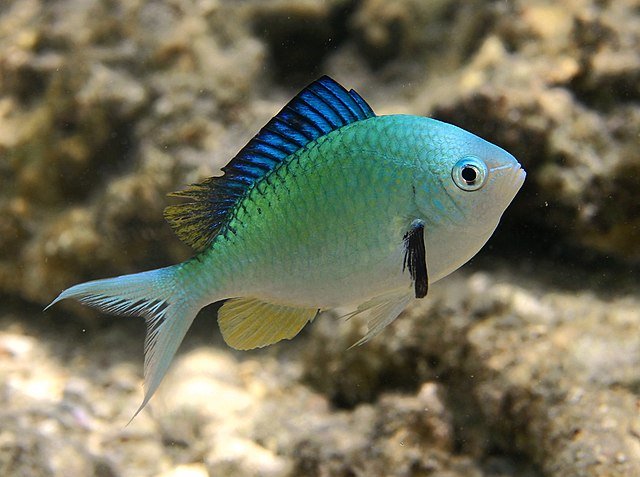
The microbiomes of fish intestines consist of thousands of bacterial taxa that interact with each other, their environment, and the host; they are subject to complexity and dynamic fluctuations, as well as influenced by their environment, lifestyle, and diet.
On the other hand, the intestinal microbiota in fish is a reliable criterion for evaluating the success of selective breeding with changes in diet composition, in species such as the gilthead seabream (Sparus aurata).
However, knowledge of the dynamics of intestinal microbiota in fish is still in its early stages due to its complexity and the multiple biotic and abiotic factors involved.
In this regard, researchers from the Institute of Aquaculture Torre de la Sal (IATS), Biotechvana, University of Valencia, Health Research Institute INCLIVA, Principe Felipe Research Center (CIPF), and the Foundation for the Promotion of Sanitary and Biomedical Research of the Valencian Community (FISABIO) have developed a computational tool that uses a unified Bayesian network approach to model the network structure of intestinal fish microbiomes and their interactions with biotic and abiotic variables associated with typical aquaculture systems.
The tool, called SAMBA (Structure-Learning of Aquaculture Microbiomes using a Bayesian Approach), accepts input data on microbial abundance from 16S rRNA amplicons, as well as continuous and categorical information from different cultivation conditions.
SAMBA can create and train a network model scenario that can be used to:
- Infer information about how specific cultivation conditions influence the diversity of the intestinal microbiome or pan-microbiome, and
- Predict how the diversity and functional profile of that microbiome would change under other variable conditions.
The study presents examples and test results of Bayesian network scenarios created by SAMBA using data from a synthetic microbial community and the pan-microbiome of gilthead seabream (Sparus aurata) in different feeding trials.
SAMBA Modules
The SAMBA tool is available in a public GitHub repository and can be installed on personal computers.
Stay Always Informed
Join our communities to instantly receive the most important news, reports, and analysis from the aquaculture industry.
The front-end component of SAMBA consists of a web-based graphical user interface (GUI) implemented using Shiny to provide a user-friendly interface.
According to the study, the functions and tasks of SAMBA are structured into five modules: “Build”, “Inference”, “Prediction”, “Viewer”, and “Downloads”. The study includes a supplementary file where you can access a user guide with technical details.
Modeling of the Microbiota
“Modeling the complex relationships of physical and biological components is particularly relevant for fish farming because the dynamics and hierarchies of fish microbiomes and pan-microbiomes can reveal information about the effects of genetics, the environment, or traceability factors,” highlighted the researchers.
The SAMBA software can be reused to investigate the causal relationships between microbiomes and their hosts by deciphering how taxon populations relate to each other and influence experimental variables.
Furthermore, the researchers report that “the conditional dependencies of SAMBA’s Bayesian networks provide a systems biology perspective that, compared to conventional analyses based on the relative abundance of taxonomic groups, is highly informative because the user can identify combined actions between taxa without making assumptions of independence, as is normally done in a typical 16S counting analysis.”
Predictive Potential
To test the potential and predictive power of SAMBA, the researchers “fed” the tool with two sets of training data: a mock community and the S. aurata database, to create two Bayesian network models.
“We can conclude that SAMBA’s predictions closely approximate real-world observations from simplified microbial scenarios created in the laboratory, which could be particularly useful for designing and exploring synthetic biology experiments,” they noted.
According to the researchers, SAMBA is a useful tool that allows users to advance their understanding of microbial community dynamics.
“Identifying which bacteria are most likely to change in response to a diet and the extent to which their abundance changes represents a cornerstone for nutrition in aquaculture,” they reported.
The study’s results highlight SAMBA’s ability to identify levels of fish meal and fish oil in the diet that have a significant influence on the microbiota profile of cultured fish.
The study was funded by the MCIN Bream-AquaINTECH project for JP-S. The study is also part of the ThinkInAzul program.
Reference (open access):
Soriano, B.; Hafez, A.I.; Naya-Català, F.; Moroni, F.; Moldovan, R.A.; Toxqui-Rodríguez, S.; Piazzon, M.C.; Arnau, V.; Llorens, C.; Pérez-Sánchez, J. SAMBA: Structure-Learning of Aquaculture Microbiomes Using a Bayesian Approach. Genes 2023, 14, 1650. https://doi.org/10.3390/genes14081650
Editor at the digital magazine AquaHoy. He holds a degree in Aquaculture Biology from the National University of Santa (UNS) and a Master’s degree in Science and Innovation Management from the Polytechnic University of Valencia, with postgraduate diplomas in Business Innovation and Innovation Management. He possesses extensive experience in the aquaculture and fisheries sector, having led the Fisheries Innovation Unit of the National Program for Innovation in Fisheries and Aquaculture (PNIPA). He has served as a senior consultant in technology watch, an innovation project formulator and advisor, and a lecturer at UNS. He is a member of the Peruvian College of Biologists and was recognized by the World Aquaculture Society (WAS) in 2016 for his contribution to aquaculture.




